Eastern black rhino
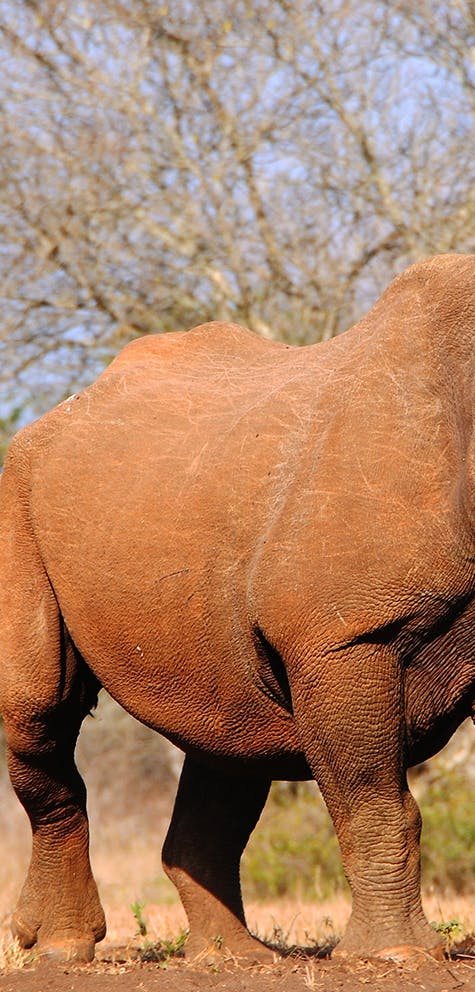
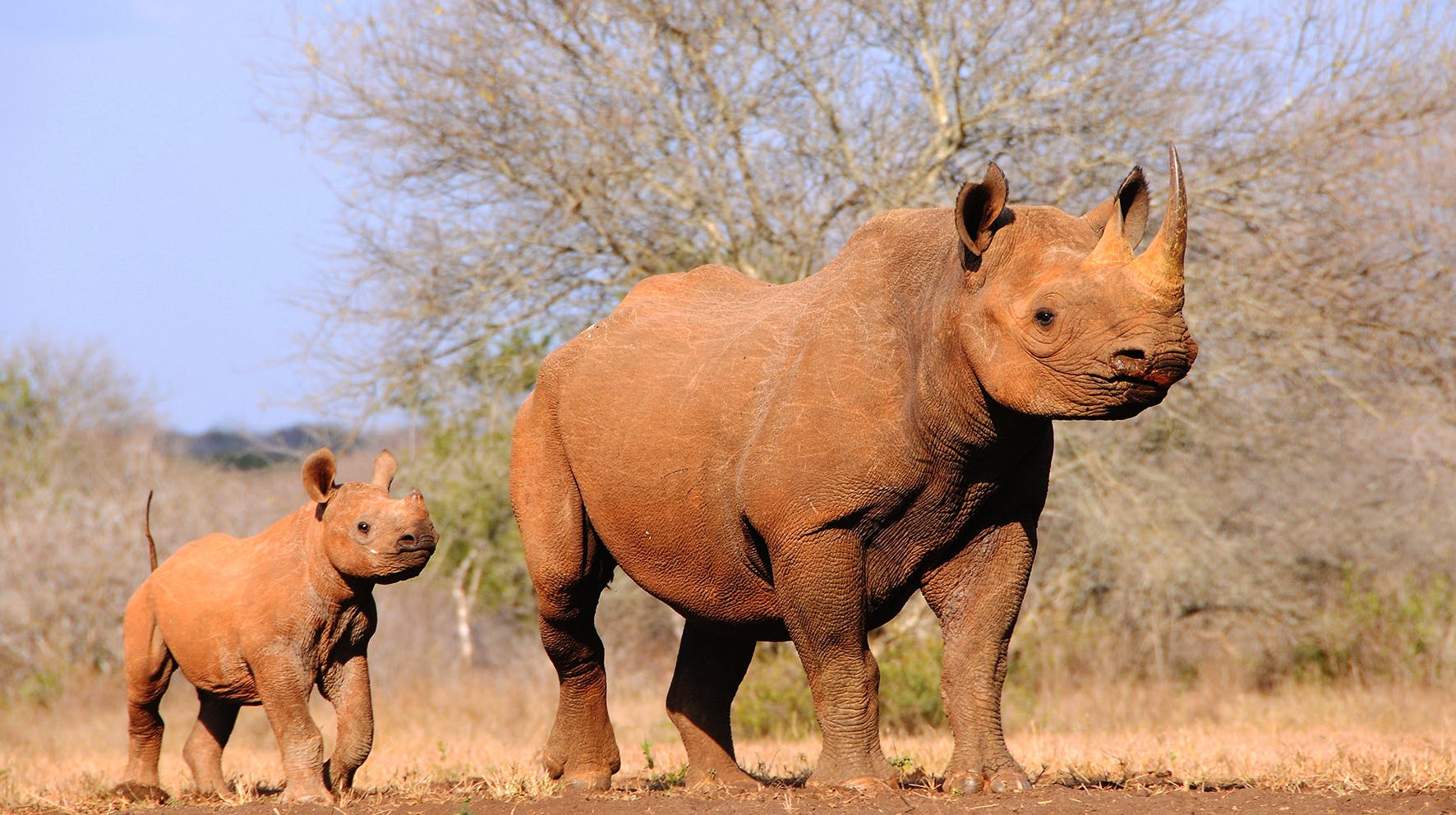


The Eastern black rhinoceros is one of the largest animals in Africa. Thanks to its impressive horn and a top speed of up to 55 kilometers per hour, most predators stay far away. However, these horns are one of the main reasons that the rhinoceros population has drastically decreased in the past century. That's why Diergaarde Blijdorp is helping to protect this critically endangered ungulate from extinction.
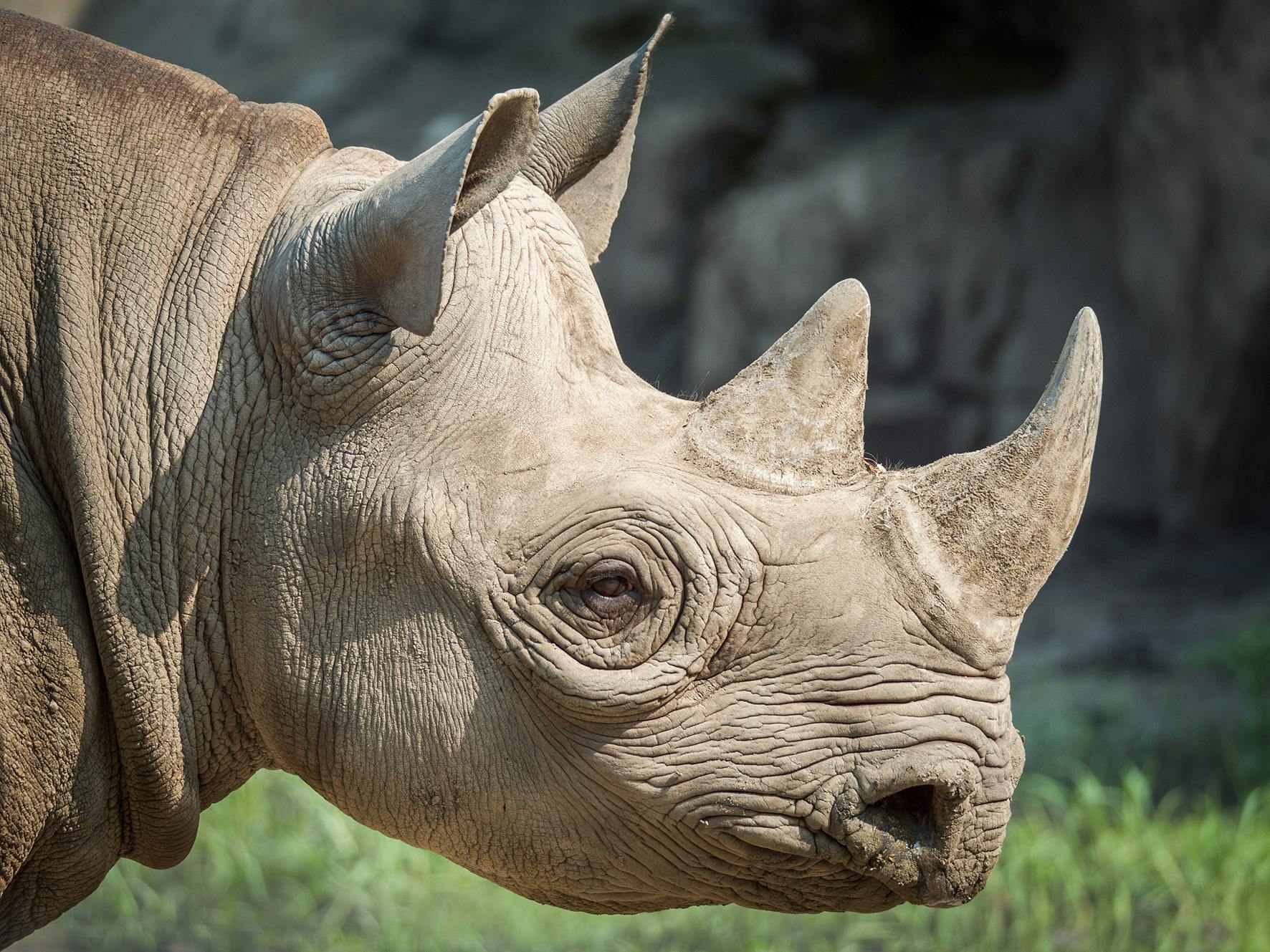
About 45 years
Height: about 1.6 meters
Length: about 2.9 - 3.75 meters
800 - 1300 kg
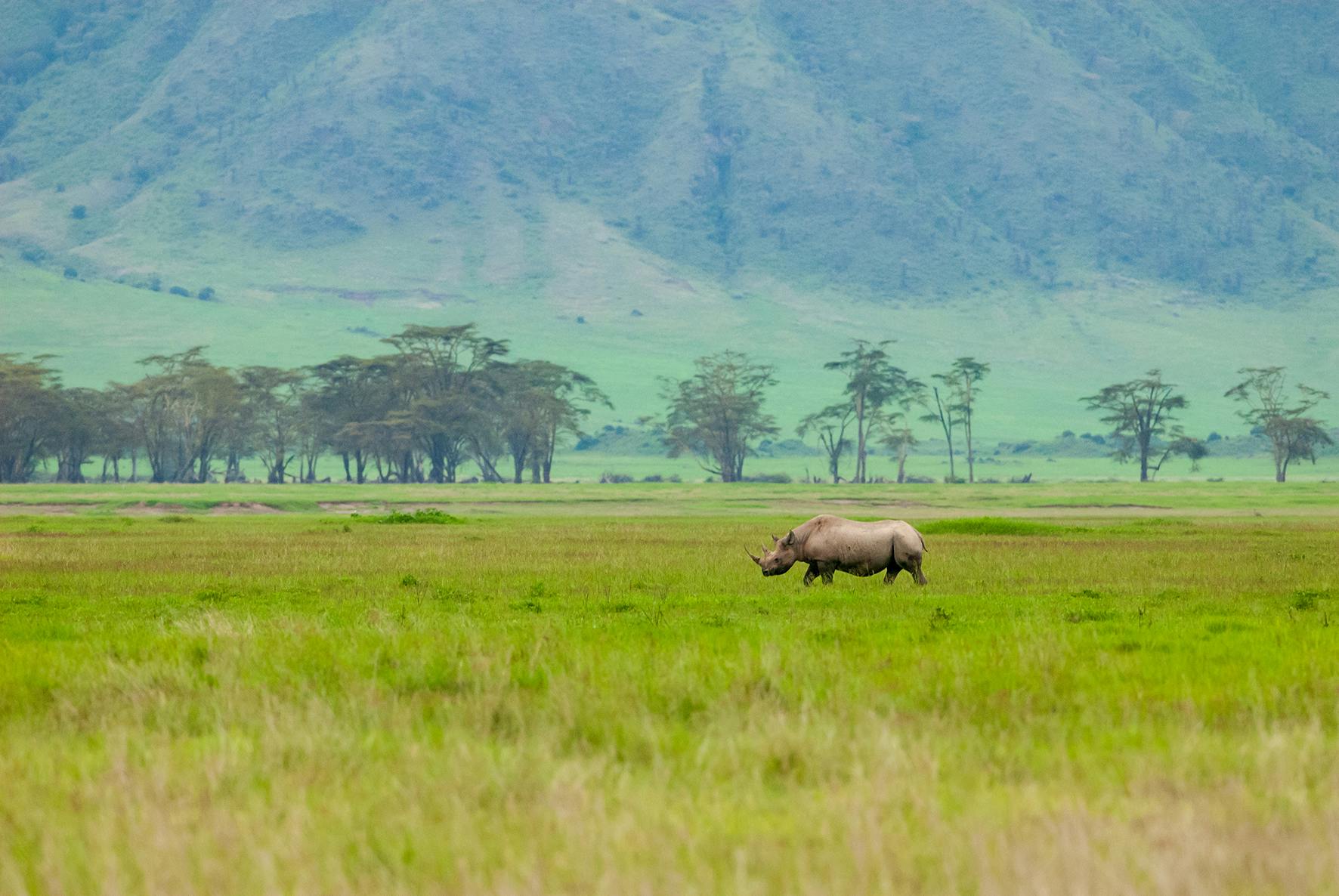
In many countries in Asia, it is believed that rhinoceros horns have healing powers. But the horn is made of keratin, the same material as our nails and hair. So, it has no medical properties. Nonetheless, the horns fetch a lot of money through Asian markets. Therefore, in the protected nature reserves where the rhinos live, there are increasingly violent, well-organized poaching gangs coming to shoot rhinos and take their horns. Protecting these areas is essential to preserve the black rhinoceros.
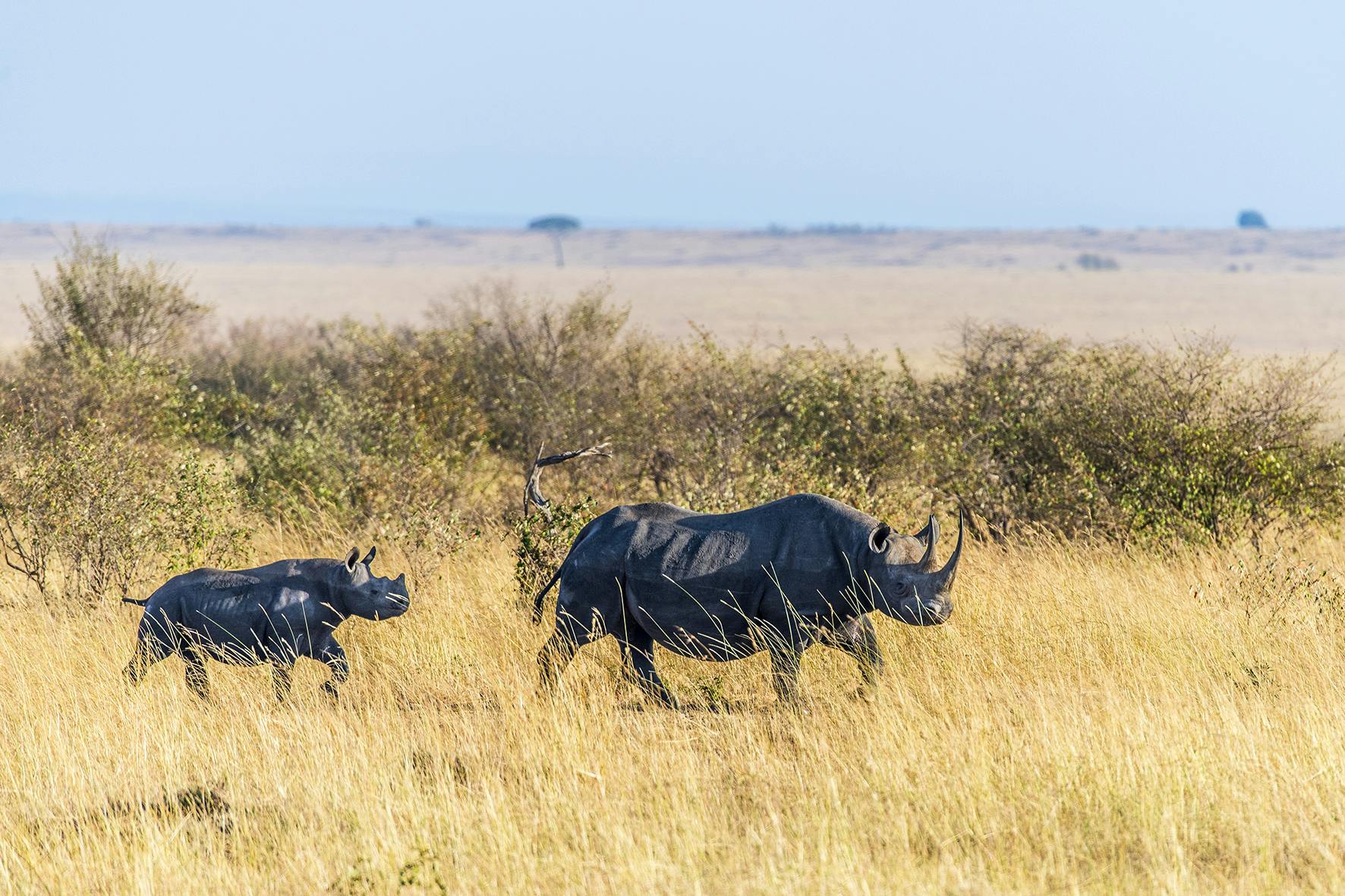
To protect the eastern black rhinoceroses in the wild, Diergaarde Blijdorp supports the Save The Rhino Foundation. This organization is committed to the global conservation of rhinos and their habitat. One of their initiatives is the Rhino Dog Squad in Kenya, a specially trained team of dogs to track down poachers and illegal goods, such as horns. These sniffer dogs not only make the rhinos safer but also better protect the local community against crime. Thanks to this dog team, the number of poached rhinos has significantly decreased.
The Eastern black rhinoceros can be found in Kenya and Tanzania. A population has also been reintroduced in Rwanda. In the past, this subspecies also lived further north, up to the border with Egypt. Eastern black rhinoceroses primarily inhabit savannas and shrub savannas, where there are plenty of leafy plants for them to eat.
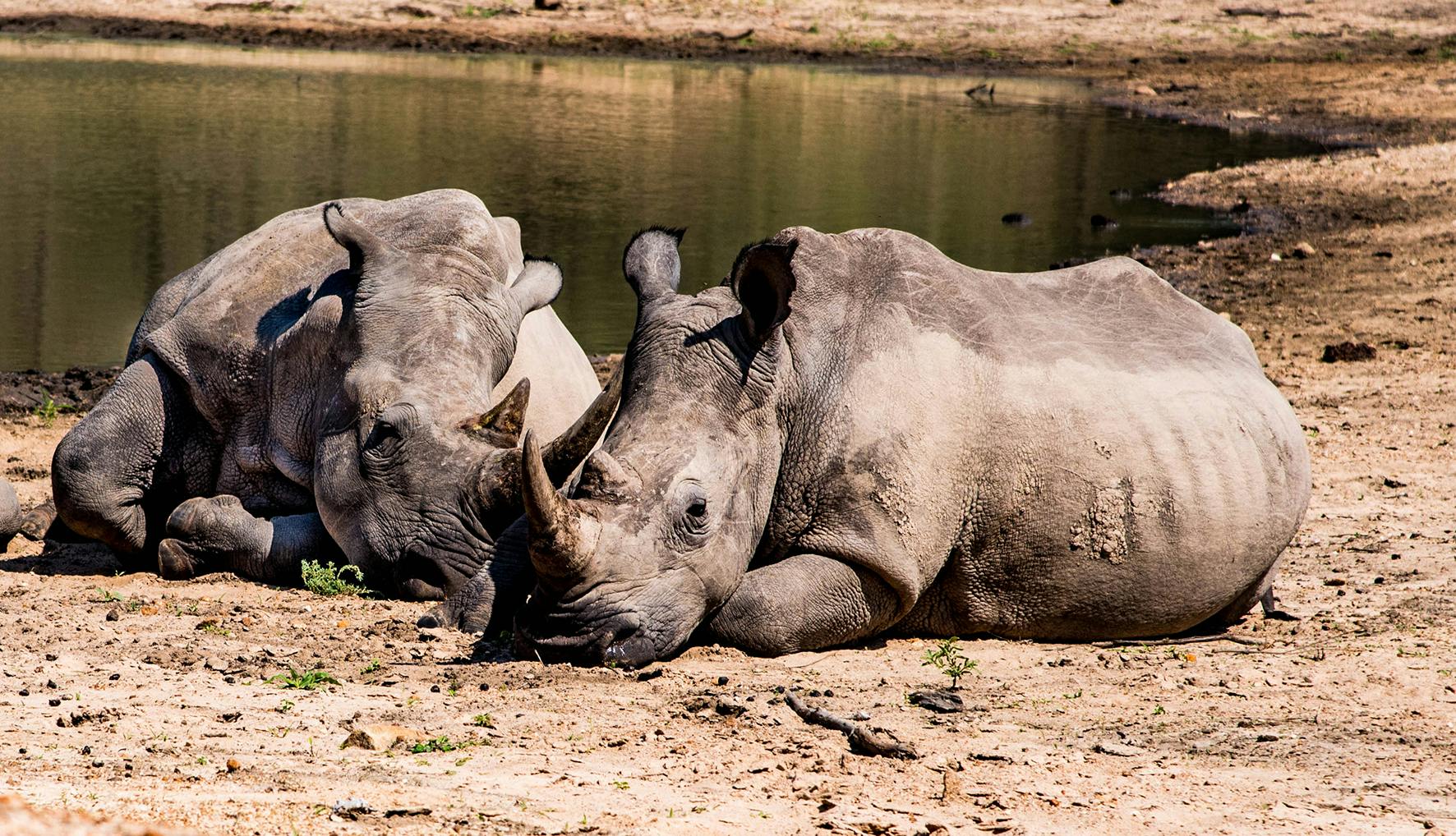
To assist in the survival of the eastern black rhinoceros, Diergaarde Blijdorp contributes to the European population management program. However, breeding rhinos for a reserve population also poses challenges. For example, black rhinos often suffer from a high iron content in their blood, which can damage the reproductive organs. Therefore, Diergaarde Blijdorp collaborates with colleges, universities, and other zoos to find the cause of this problem.
The eastern black rhinos in Blijdorp each have their own enclosure because they spend most of their time alone. They each have a shady spot and a food cage where the caretakers place branches and rose petals. Because black rhinos are quite skittish animals, their indoor enclosure is not accessible to visitors. This way, they have a safe place to rest.